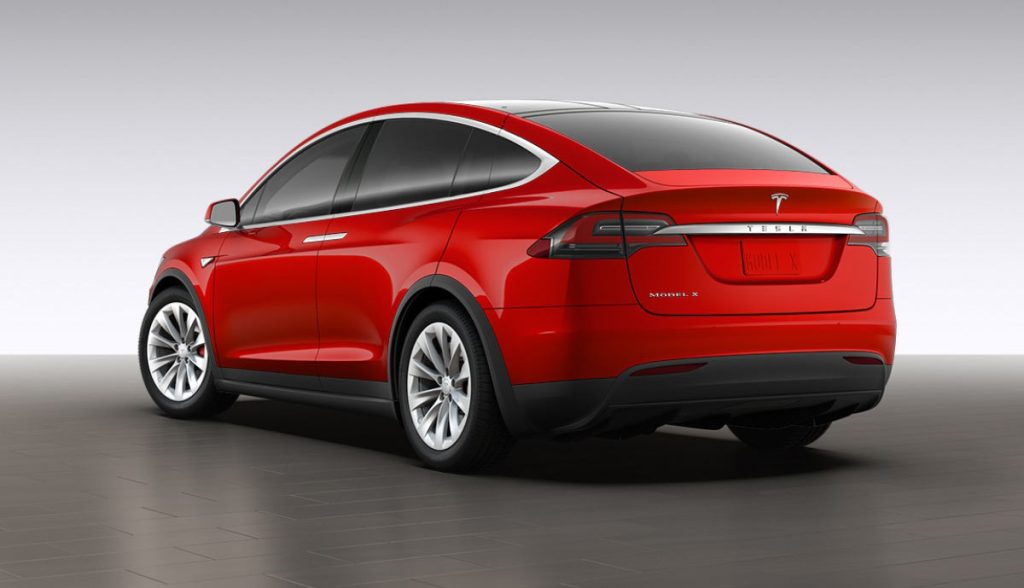The long-awaited Tesla Model X, which will launch on September 29, may be the most popular car with American business owners, not because of its signature ‘Falcon Wing’ doors or ‘beauty image’ for second-line seats, but. because it can be a great design even if it is the original price of eighty thousand dollars.
With more than $ 7,500 in corporate tax credit for the purchase of electric cars and other tax incentives at the state level, the weight of the Model X and its capabilities could result in a $ 25,000 tax exemption on Section 179 heavy vehicles, also known as Hummer. Tax Loophole ‘…
Section 179 of the tax code, which allows taxpayers to deduct the cost of certain equipment instead of making money and reducing it, became notorious for making Hummers famous with businesses when it allowed tax exemptions amounting to $ 500,000 to buy heavy cars and. equipment. So the ‘Hummer Tax Loophole’ is a nickname. The loophole was revised to allow up to $ 25,000 in tax evasion, though fraudulent attempts are making it back to $ 500,000.
Under Section 179, an SUV or Crossover, like the Model X, needs to have a vehicle weight (GVWR) of more than 6,000 lbs in order to be tax deductible. Tesla has not yet confirmed the official GVWR Model X, but a small addition from Model S’s specifications, which is built on a similar platform to the Model X, shows that Tesla’s new SUV can easily reach more than 6,000 lbs.
The weight of the car is the weight of the car (curb weight) as well as the weight of the driver, carriers and cargo holders, but not including the weight of any trailer and the towing capacity.
Independent battery size, the GVWR of the Model S is 5,710 lbs. The channel weight of the Model S 70D is 4,608 lbs. Elon Musk said the Model X should be heavier than the Model S. Adding the Model S 70D’s GVWR by 10% of its weight makes it reach 6,170 lbs or more than 6,000 mark, and that is the only option for a small battery. and without considering any additional opportunities for that Model X.
This should make the Model X the first electric car with a car mass of more than 6,000 lbs, thanks in part to a heavy battery pack, which can weigh as much as 1,200 lbs.
Considering the tax incentives for electric vehicles, money can be kept on gas and now this can be tax deductible, I would not be surprised if business owners and boat managers started bringing the Tesla Model X Tax Deduction to those who won after the introduction of the car. end of the month.
Can I Take My Car As Business Money?
Can my business deduct the cost of my car? “” Can I buy a Tesla Model X for my business? “The answer is not as simple as you think.
If you use your car for commercial purposes only, you can deduct the full amount. There are some exceptions that will be discussed in section 2.
If you use your car for both business and your purposes, you can only deduct the cost of its business use. To do so, you will need to calculate the percentage of business usage in one of the following two ways:
- From mileage
- From the actual price
- Each method incorporates nuances. Let’s join in one at a time.
Standard Mileage Rate
The Standard Mileage Rate requires you to track your mileage. Finding your miles is important. You get a tax deduction based on the number of miles you drive to a business-traveling trip. The IRS provides the average mileage rate per year. In 2021, the amount you are entitled to deduct is 56 cents per mile; for 2020, it was 57.5 cents per mile. For example, if you drive 4,500 miles by 2020, your deduction will be $ 2,587.50.
If you choose the standard mileage rate, you will not be able to deduct real car costs such as repairs, repairs, gas, oil changes, insurance, lease payments, and negligence. These items have already been rated according to the mileage set by the IRS.
The only money you can deduct is the excluded tax rate, such as the need to pay for your car, parking fees, and business travel taxes. Fortunately, you no longer have to keep track on paper. Your phone AppStore has many options like Mile IQ or QuickBooks to help you keep track easily.
The Real Money Way
Cost Route Depends on the cost of the car you used. It includes gas, oil change, tires, car wash, insurance, registration fees, rental payments and reductions. You can only deduct a portion of the money spent on the business use of your car. To get the most out of your car business use, add your business miles and the number of miles you drive for a year. For example, if you drove 6,500 miles to a business and your odometer indicates that you drove 12,000 miles a year, cut 6,500 and 12,000. The result is 54%.
Which method is best for you?
Generally, either method will have the same effect. But keep in mind, depending on your different circumstances, these two approaches may produce different results. For example, high rental rates and low business mileage could result in significant reductions in real-time investment. Thus, if your business mileage is important, you can have a higher reduction using the standard mileage method.
It is important to keep all your receipts up so that you can read the exceptions in two ways, and then choose the method that works best for you. If you are looking for convenience, use the standard mileage rate. It requires a little recording, as you just have to look at how many business miles you traveled, and not the exact amount you bought for your car.

